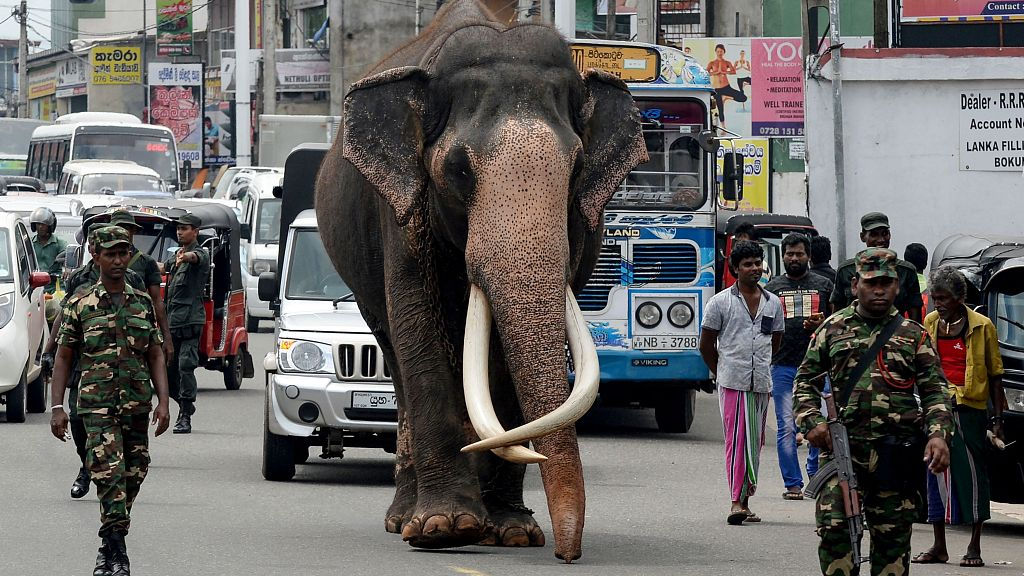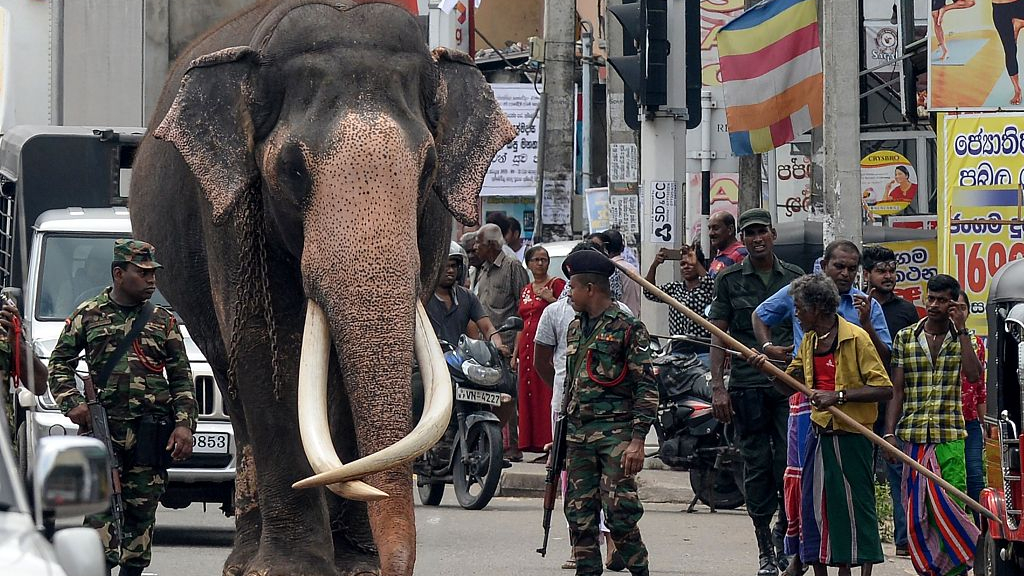
An Indian-born tusker (or bull elephant with large tusks) called Nadungamuwa Raja is being escorted by security personnel as he walks on a street on the outskirts of Colombo, Sri Lanka, September 21, 2019. /VCG Photo
An Indian-born tusker (or bull elephant with large tusks) called Nadungamuwa Raja is being escorted by security personnel as he walks on a street on the outskirts of Colombo, Sri Lanka, September 21, 2019. /VCG Photo

An Indian-born tusker (or bull elephant with large tusks) called Nadungamuwa Raja is being escorted by security personnel as he walks on a street on the outskirts of Colombo, Sri Lanka, September 21, 2019. /VCG Photo
An Indian-born tusker (or bull elephant with large tusks) called Nadungamuwa Raja is being escorted by security personnel as he walks on a street on the outskirts of Colombo, Sri Lanka, September 21, 2019. /VCG Photo

An Indian-born tusker (or bull elephant with large tusks) called Nadungamuwa Raja is being escorted by security personnel as he walks on a street on the outskirts of Colombo, Sri Lanka, September 21, 2019. /VCG Photo
An Indian-born tusker (or bull elephant with large tusks) called Nadungamuwa Raja is being escorted by security personnel as he walks on a street on the outskirts of Colombo, Sri Lanka, September 21, 2019. /VCG Photo
The male elephant pictured above, Raja, is lucky. He is guarded by high security, which means safety for both the elephant and people around it. Another elephant in the same country was much less lucky. Two weeks ago, an elephant taking part in a Buddhist pageant in Sri Lanka ran berserk, injuring at least 18 people.
Ornately decorated elephants are a major attraction in Sri Lankan Buddhist pageants. According to AP, many wealthy families own captive elephants as a symbol of their prosperity, pride and nobility and send their elephants to participate in pageants around the country. However, this does not mean the Sri Lanka elephants live a carefree life.
The Sri Lankan elephant is a subspecies of the Asian elephant, and the biggest one of the three subspecies. Native to Sri Lanka, the elephant's population once dropped dramatically. According to 2011 statistics, there were less than 6,000 Sri Lankan elephant in the wild. They are listed as endangered by the International Union for Conservation of Nature (IUCN) as the population has declined by at least 50 percent over the last three generations (60-75 years,) with the species threatened by habitat loss, degradation and fragmentation.

It is estimated that Sri Lanka has the highest density of elephants in Asia. Human-elephant conflict is increasing, since the greatest threat to elephants comes from an expanding human population and its demand for land. As habitats are being destroyed, more and more elephants tend to invade human residential areas, damaging farmlands for crops as food. Data shows that between 1999 and the end of 2006, nearly 100 wild elephants were killed each year to protect crops and houses.
Poaching is another severe threat. Despite the fact that only male Asian elephants have tusks, and only 7 percent of male Sri Lankan elephants have tusks, illegal ivory trade is still ongoing in the country.
Cover image via VCG)
(If you want to contribute and have specific expertise, please contact us at nature@cgtn.com.)